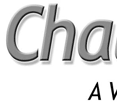| NKY WEATHER NOW |
More NKY Weather |
| Brought to you by: |
|
|
| NKY TRAFFIC NOW |
| Powered by: |
|
|
|
|
||||
 |
 |
|||
| Home | NKY News | Freetime | Travel | Homezone | Cars | Shopping | Working | Classifieds | About NKY | About Us | Contact Us |
|
Archives: Community Vision
A Streetcar Named Kentucky
COVINGTON If you could piece together the random scraps of track that remain throughout the small towns of Northern Kentucky, you would find that the trolley system stitched together a patchwork of communities that grew along its path. As they rolled beyond city limits, the trolleys expanded and redefined the very nature of American life in the late 19th century.
Davidson points out that the trolley affected not only the geography of the community, but also the very dynamics of the lifestyles of its residents. As the last of the 225 mules that the Covington Railway Company and the Newport Railway Company relied upon to pull their trolley line were retired, suburbs grew in Northern Kentucky. The electric trolley, locally known as the Green Line, ambled along tracks and over trestles to bring more and more people, and with them, growth, to numerous small neighborhoods that emerged into their own viable cities. By 1876 the South Covington and Cincinnati Railway Company was chartered and later purchased the Covington and Cincinnati Street Railway Company. It changed its official color to green and hence the Green Line was born. The Cincinnati and Newport Street Railway Company, the Newport and Cincinnati Street Railway and South Covington, and Cincinnati Street Railway Company merged to form the Cincinnati, Newport, and Covington Railway Company, maintaining the Green Line name. The Green Line had 38 streetcars and 225 mules. In 1890 the Green Line began purchasing electric trolleys. But progress invariably comes with a price. The rising cost of street maintenance, which was shared between the trolley companies and local cities, led to a desire to change routes, and eventually the Green Line was converted into buses. In 1973 the Green Line Company was taken over by Transit Authority of Northern Kentucky (TANK). But the Green Line was not to be laid to rest forever. On July 5, 1950, the trolley car known as Kentucky, rolled to its final stop in Devou Park at the Behringer-Crawford Museum. Kentucky was built in 1892, but in 1911 the company wanted a private car for company officials to use. All of the regular passenger seats were removed from the car and decorative wicker seats were put in their place. Ornate ironwork curved along the platforms, gold and red curtains hung from the windows, and a deep burgundy rug covered the floor. The parlor quickly evolved into the party car and could be chartered by the public for birthday parties and other celebrations. The man instrumental in getting the car to Devou and having it refurbished was Earl Clark. Clark and a group of his contemporaries founded the Cincinnati Railway Society. John White, who later served as the curator of the transportation museum at the Smithsonian Institute in Washington DC was another member. The Kentucky will return to the Behringer-Crawford Museum next year upon completion of the new addition. It will be a key feature in the Eva G. Farris Transportation Room.
|

|
|
Home | NKY News | Freetime | Travel | Homezone | Cars | Shopping | Working | Classifieds | About NKY | About Us | Contact Us Copyright © 2004, Challenger Communications, LLC, Covington, KY, USA
|

